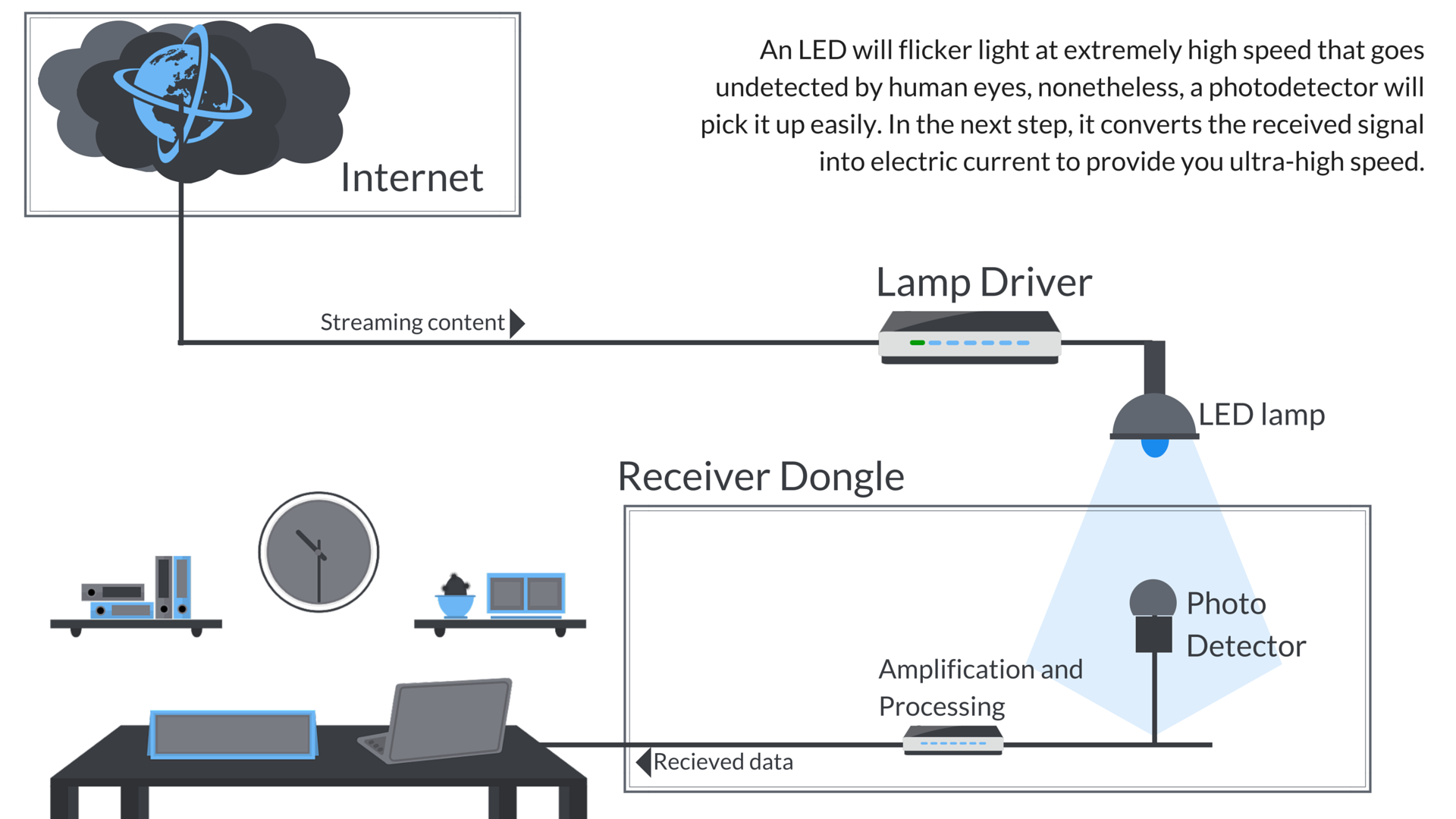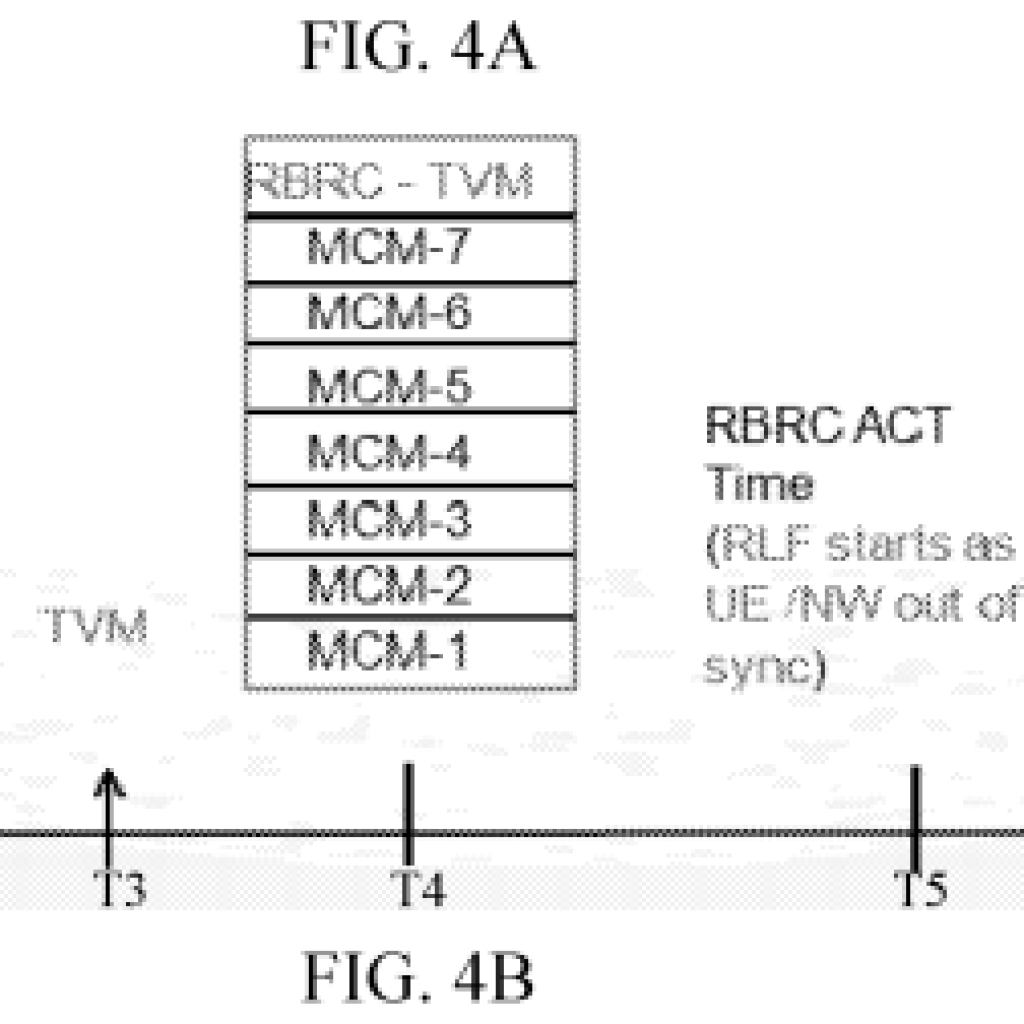LiFi right after its public disclosure took the world by storm. The new communication method claimed to use LEDs instead of dongles or antenna devices to provide internet access and data transfer at ultrahigh speed.
In 2015, after several lab tests, LiFi achieved a record-breaking data transfer speed of 224Gbps. In later “real-world” tests by the Estonian startup Vélmenni, transfer speeds were found to be as high as 1GB per second – which’s 100 times faster than conventional Wi-Fi.
An exciting technology with tremendous potential and given the hype surrounding it, we decided to explore the niche in depth to figure the top players and companies actively researching in this domain and yet maintaining a low profile. When we began to dive deeper, a lot of unknown facts became apparent. One of them being the origins of LiFi: Though LiFi was first publicly disclosed in August 2011, the first patent around the technology was filed in 2006. By Huawei. Not Professor Harald Haas, who is considered as the Father of LiFi technology.
CMO’s Note: If you’re short on time and want to catch up on this study later, probably on a weekend or during a commute, we are about to save you the trouble of adding two bookmarks on the ever-growing list. We have converted all the four parts of this study(including this one) into a single PDF so that you could read it at your convenience. You can get a copy by filling this form below:
Now, even though it has been 7 years since public disclosure and R&Ds efforts in this tech have doubled since then, LiFi isn’t anywhere near in competition to WiFi. The products related to technology are limited and have not yet achieved mass proliferation despite the advantages it offers.
Why?
Drawbacks. Yes, the technology has some serious drawbacks which need to be solved before LiFi achieves its zenith. What are these drawbacks? Let’s have a look at some of them.
The Temporary Problems With LiFi
LiFi requires specialized LEDs to work flawlessly. Though Prof. Harald Haas claimed in his TED talk that LiFi can work with existing LEDs, the statement is just partially true.
There is a huge variety of LED bulbs in the market, each with different specifications. It is not necessary that your LED bulb will be compatible with your choice of LiFi adapter. Also, as LiFi works only in the line of sight, you will need to buy at least one LED bulb for each corner of your room.
Editor’s Note: Researchers have found multiple solutions to this problem that will let you use almost every existing LED bulb as a LiFi router. Read more about the findings from here.
Further, LED bulbs with inbuilt hardware that support LiFi communication have debuted very recently in the market. For integration with existing LEDs sans the inbuilt hardware, one would need extra adapters for their devices, maybe at least one for every room. Needless to say, this further increases the cost and good ol’ WiFi suddenly seems a much better option to stick with.
Even if you decide to deal with the cost of LEDs and LiFi adapters and are waiting eagerly to make your house conducive to use LiFi, there’s still one major problem which would leave a huge hole in your pocket – New network wiring settings.
As you know, your current LED bulbs are connected directly to electricity but in the case of LiFi, they need to be connected to your network. So, you might need to consider rewiring your house again.
Currently, there are few products from PureLiFi like LiFi-X or Li-Flame, that try to ease this hurdle as they are comparatively easier to set up but they still require extra wiring and adapters which needs to be carried around if you’re using it on laptop or smartphones.
The Non-Temporary Or Nearly Permanent Problems With LiFi
All of the above problems are temporary, right? Once you set it up, you’re good to go. But then there’s more. Some nearly permanent problems that will make you hold close to your WiFi router.
Range
Connecting to the internet over LiFi is as confined as the light from that LED. It can’t penetrate walls like WiFi. Just one obstacle, and bam you’re disconnected! You would also need to be in a defined range to use it efficiently as light intensity decreases with distance. Literally, you can’t even turn your back against the LED bulb because that will again interfere with light, and thus with your signals.
Interference From Other Light Sources
LiFi is good for indoor purposes, as long as you are in an enclosed area with minimum or no ambient light. If your room has windows or if you’re sitting on your balcony, there are fair chances that light from outside may mess with your LiFi signals.
Requires Additional Devices
There’s no consumer Smartphone or computer with built-in LiFi support yet. One would need additional devices to use it on their laptop – Two signal emitters on both ends (one being the device and other being the already existing LED), and two signal receivers (again, one for the laptop and other hooked at your ceiling).
Pure LiFi products claim to use a single AP (emitter) for multiple client-side devices (laptops and Smartphones) but you will still need multiple receivers for every single device.
Might Not Work During Night
How would LiFi work during the night? Do I need to keep my lights on in order to use it? — These questions have become quite common when people talk about LiFi.
You may not be able to play your favorite game in the dark by switching off your lights. There’s a debate to use infrared light (that is almost invisible) instead of LEDs in LiFi to make it workable for nights as well. This, however, is prone to reduce the data speed. Moreover, IR radiation can be harmful to the skin.
Conclusion
These are not problems, but limitations per se of the new communication network. Almost all of these can be overcome, as scientists and engineers over the world are researching the domain continually at a steady pace.
LiFi can become a great communication method for home networks, for example, to transfer data from one computer to another, or to stream high definition movies from your home media station. It’s just a smartphone away from becoming popular; as soon as we see Li-Fi compatible smartphones in the market, it won’t be long before they find a place in our household.
Until then, let’s stick to our beloved WiFi routers.
Authored By: Shabaz Khan, Senior Research Analyst, Market Research.
P.S. Do you know what technology or which company is going to disrupt the 3D metal printing industry? Here is the answer!










